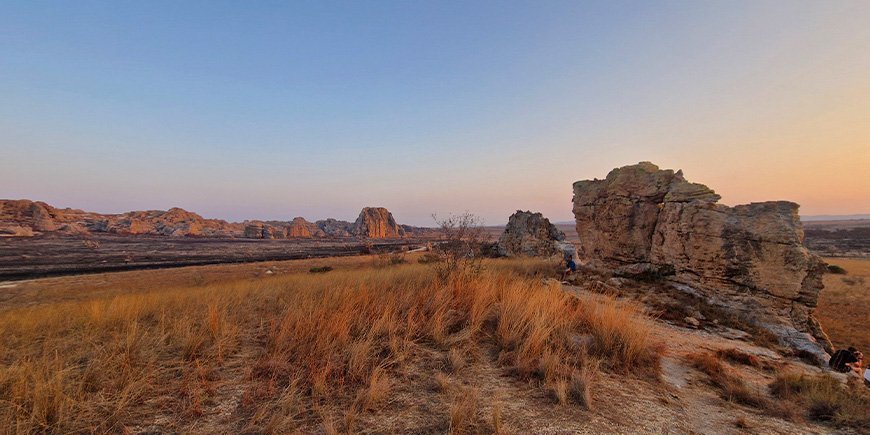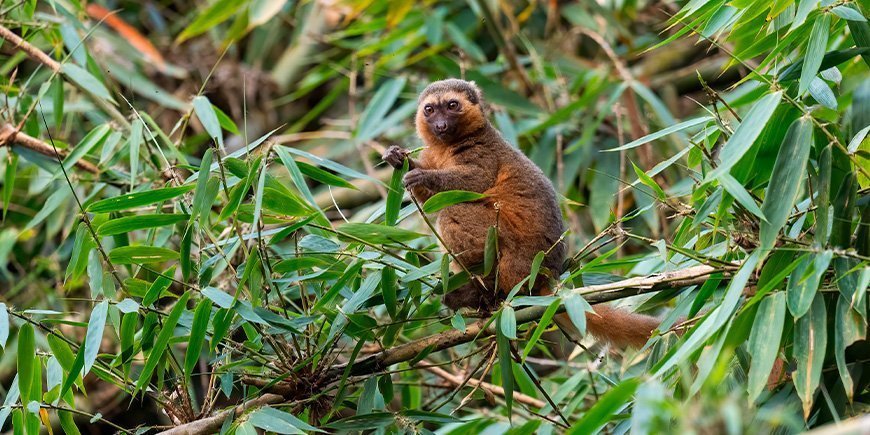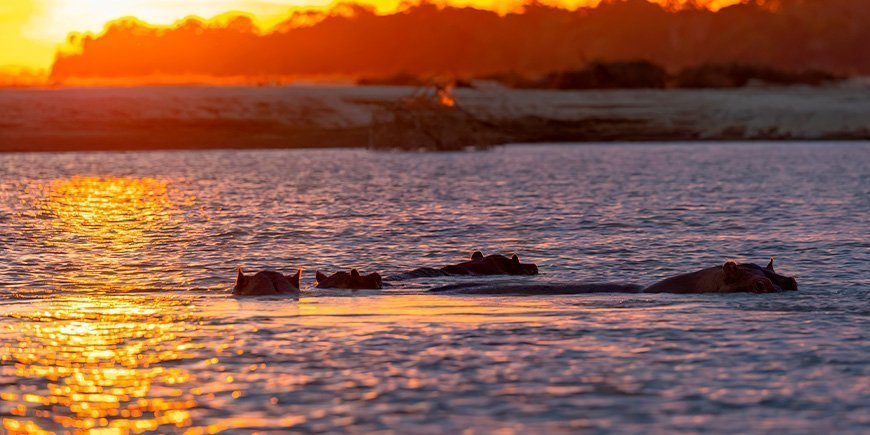- Home
-
Our tours
- Our tours
- Africa
- Asia
- Latin America
- North America
- Oceania
- Holiday types
-
Accommodation
- Accommodation
- Africa
- Asia
- Latin America
- North America
- Oceania
-
Practical info
- Practical info
- Africa
- Asia
- Latin America
- North America
- Oceania
- Info & contact
- Blog
Africa’s best national parks
23.02.2018 | updated: 26.03.2025
Africa abounds with beautiful national parks and game reserves.
Each country offers unique and diverse experiences.
An incredible combination of spectacular wildlife, fascinating nature and experiences most people only get to enjoy once in a lifetime.
Read below and find out which national parks and game reserves are among Africa’s best.
Serengeti National Park in Tanzania

Serengeti National Park has one of the world’s oldest ecosystems.
When you enter the national park, you are greeted by a beautiful view. The endless plains are impressive and the dense vegetation on the hills is picturesque. The national park is unique.
Not only does it offer amazing nature, but abundant wildlife, too. Wildebeest, zebras, lions, elephants, leopards, buffaloes, hippos, rhinos and many, many more animals. In fact, if you are lucky, you might even experience the Big Five!
Serengeti National Park is an acquaintance you won’t forget in hurry.
Did you know that: Serengeti National Park became a UNESCO World Heritage Site in 1981, due, among other things, to the Great Wildebeest Migration, when some 2 million animals make their way between Serengeti National Park and Masai Mara in Kenya every year.
Kruger National Park in South Africa

Large grasslands, lakes and rocks adorn the vast area of the national park. The park measures approximately 350 km from north to south and 65 km from east to west. Covering an area of more than 20,000 km2, the national park is South Africa’s largest – and actually the oldest.
Kruger National Park is home to a wealth of animals. In fact, around 11,000 elephants and 35,000 buffaloes and zebras live in the park. There are also antelopes, lions, leopards and many others.
The animals flock to the watering holes and lakes in the afternoon, and with a little luck you might see the elephants bathing.
No matter what season you choose to visit the national park, wonderful wildlife and nature experiences await you.
Did you know that: There are about 520 bird species, 146 different mammals, 120 reptiles and 2,000 different plant species in Kruger National Park?
Masai Mara National Reserve in Kenya

In south-west of Kenya, on the border with Tanzania, is the Masai Mara National Reserve.
Grasslands, acacia trees and mighty plains with large herds of animals are the essence of the reserve.
Masai Mara is every bit as beautiful in real life as in the pictures.
The animals that live here include elephants, zebras, giraffes, lions, hyenas and cheetahs. And if you’re lucky, you might spot all the animals of the Big Five.
Masai Mara is the Kenyan part of the ecosystem of Serengeti National Park, and large herds of animals make their way here in search of food and water (the Great Migration).
In addition to the outstanding nature, it is also possible to visit the Masai villages.
Did you know that: Masai Mara National Park has the largest concentration of wildlife in the world during the rainy season?
Isalo National Park, Madagascar
Isalo National Park is said to be among Madagascar’s most famous national parks. It offers breathtaking landscapes that leave most visitors in awe. Spanning approximately 800 km², the rugged sandstone formations, deep canyons, oases with verdant palm-fringed lakes, and flat plains create a diverse and stunning natural environment.
The park is home to six different species of lemurs, including ring-tailed and sifaka lemurs, as well as over 100 bird species and numerous reptiles and amphibians. Several plant and animal species are unique to the area, such as the distinctive elephant foot plant, resembling a miniature baobab tree with bright yellow flowers.
A day in the park might involve walks of varying length, where you and your guide choose the most suitable route. Although the paths can be challenging with ups and downs, the rewards are plentiful. You will have the opportunity to cool off in the park’s natural pools and admire its spectacular scenery.
Did you know that: Isalo has a great cultural significance for the local Bara people, who bury their dead in caves high in the cliffs?
Bwindi Impenetrable National Park in Uganda

Bwindi Impenetrable National Park is home to around half of the threatened mountain gorillas left in the world. And around 340 mountain gorillas live in the national park.
The gorillas are one of the reasons that the park was named a UNESCO World Heritage Site in 1994.
Not only is it home to the mountain gorillas, but it is also the park housing the most mammals in Uganda. Some 120 different species live here. In addition to the mammals, more than 340 bird species inhabit Bwindi Impenetrable National Park.
Did you know that: Bwindi Impenetrable National Park is one of the most biologically diverse places on earth?
Chobe National Park in Botswana

Chobe National Park is one of the best places to see elephants in Africa. There are around 50,000 elephants living in the park, with some herds of up to 100 elephants.
The river running through the park – the Chobe River – is one of the reasons for its high biodiversity and well-functioning ecosystem.
Down by the river, you will see elephants bathing to cool down, hippos enjoying a relaxing soak and crocodiles lying completely still in the water. You may also be lucky enough to see all five of Africa’s Big 5 in the park as well as other classic safari animals such as zebras, baboons and kudus.
The ideal way to experience the park is to combine a regular safari with a cruise on the Chobe River, as you get to see the best of Botswana’s wildlife on land and in the water.
Did you know that: the national park was used as a hunting area in the 19th century? The elephants in particular were hunted for their tusks, which were used to make piano keys, combs and billiard balls.
Ranomafana National Park, Madagascar
Ranomafana National Park is part of the Atsinanana rainforest and a true paradise for nature enthusiasts. The park’s steep slopes are covered in dense rainforest, where towering ferns and moss-clad trees create an enchanting atmosphere. Its wildlife is impressive, boasting 12 species of lemurs, over 100 bird species, as well as a host of chameleons, frogs, and butterflies.
A guided hike through the park gives you the chance to spot the rare golden bamboo lemur, one of the world’s most endangered lemur species, first discovered in 1986. Although the trails can be muddy and challenging due to the humid climate, the reward is immense when you glimpse these fascinating creatures in their natural habitat.
Did you know that: the Ranomafana area has plenty of hot springs, which contributed to the national park’s name? Ranomafana actually means ‘hot water’.
Ngorongoro Conservation Area in Tanzania

In the northern part of Tanzania, south-east of Serengeti, lies the Ngorongoro Conservation Area. The highlight of the area is the Ngorongoro Crater, an extinct volcano that exploded 2–3 million years ago.
The crater has a floor area of 260 km2. From the base of the crater, the edges extend to a height of 600 metres. A spectacular sight.
Today, gazelles, lions, zebras and 350 bird species, inhabit what is the world’s largest inactive volcano crater.
The Ngorongoro Conservation Area became a UNESCO World Heritage site for its nature in 1979, and again in 2010 for its cultural value.
Did you know that: The Ngorongoro area is the place in Africa inhabited by the densest stock of big game?
Amboseli National Park in Kenya

What a magnificent experience it is to have a view of the world’s highest free-standing mountain, Kilimanjaro, with snow on the top when you’re standing in a national park!
But that’s what you get in one of Kenya’s smallest national parks, Amboseli National Park.
There is ample opportunity to enjoy a whole host of nature experiences in the national park, which offers wetlands, savannah, forest and Lake Amboseli, which often dries out.
Amboseli National Park has sparser vegetation, making it easier to see the wildlife, which includes hippos, leopards, giraffes, lions, elephants and lots of birds.
Did you know that: You can see some of the world’s largest elephant herds in Amboseli National Park?
Nyerere National Park, Tanzania
Nyerere National Park is Africa’s largest national park, covering over 30,000 km². It’s more than twice the size of the Serengeti and is listed by UNESCO for its significant nature conservation due to its vast size and diversity of landscapes and wildlife. A tour to Nyerere is an unforgettable journey into the wild heart of Tanzania.
The wild and varied landscape features open plains, wetlands, forests, and rivers, including Tanzania’s largest river, the Rufiji, which sustains plant and animal life around it.
Nyerere National Park houses a large concentration of wildlife, including elephants, lions, leopards, giraffes, and buffalo.
Did you know that: Nyerere National Park is renowned for having Africa’s largest population of wild dogs, which are one of the world’s most endangered mammal species?
The African national parks and wildlife reserves all offer unique experiences: Amazing wildlife experiences and fascinating nature unique to Africa.
Want to enjoy the experience of your lifetime?
Take a look at our tours to Africa and draw inspiration for your next holiday.
TourCompass – From tourist to traveller



